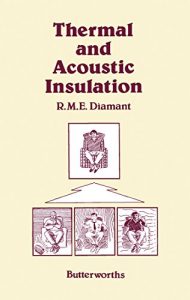Thermal and Acoustic Insulation deals with general aspects of thermal insulation, condensation, properties of inorganic insulation materials, organic high void insulation materials, glass, and glazing. The book also describes noise insulation, computerized insulation calculations, fire properties of insulation materials. The book explains thermal insulation, heat transfer (through conduction, convection, radiation), the theory of water vapor diffusion, and dehumidification. The two types of insulation materials in common use prevent the passage of radiant heat through reflection or by impede the flow of conducted heat. The engineer should choose insulation materials with a low thermal conductivity that also have a very high void content. The book suggests, in practice, a material with a k-value of 0.035. The other properties of insulation materials are mechanical strength, physical resistance, chemical resistance, temperature limits, fire resistance, hygroscopy, fungoid resistance, and pest resistance. The text describes a variety of materials are suitable for insulation, such as gypsum, foamed asbestos, foam glass, glass fiber wool, expanded perlite, vermiculite, and foamed plastics. The book will prove beneficial for architects, for computer programmers involved in insulation, for engineers working in building construction, insulation, fire prevention, as well as for private house- or corporate building-owners.
This site is safe
You are at a security, SSL-enabled, site. All our eBooks sources are constantly verified.






